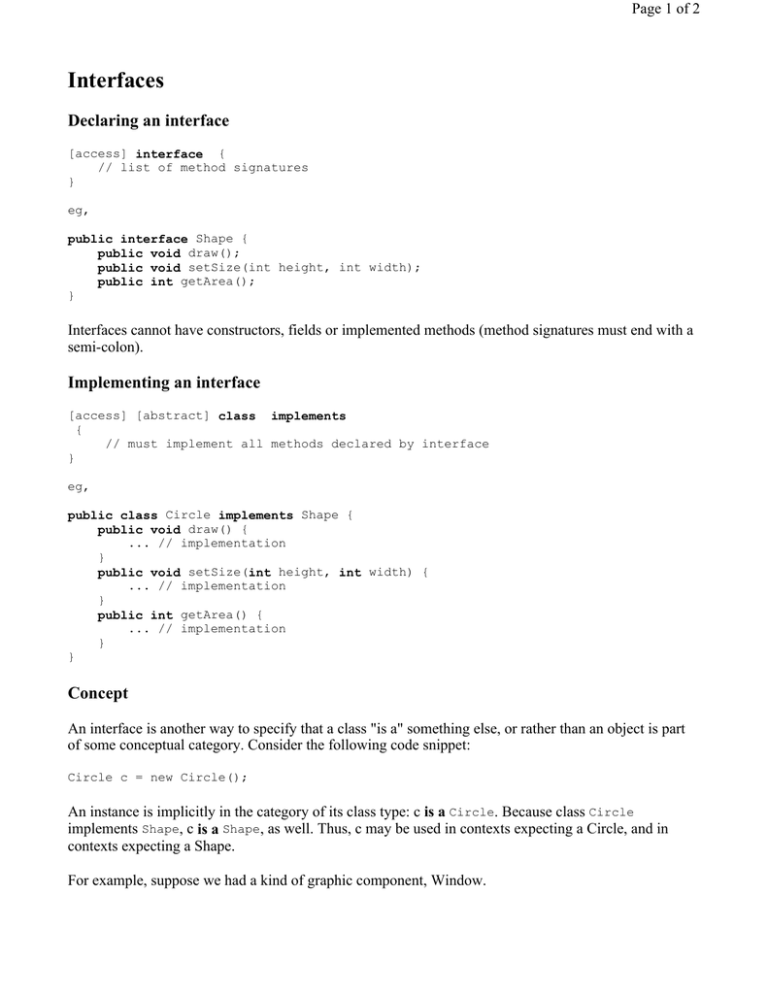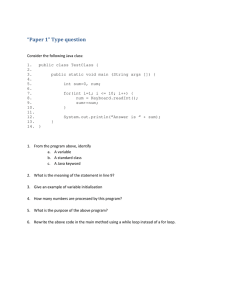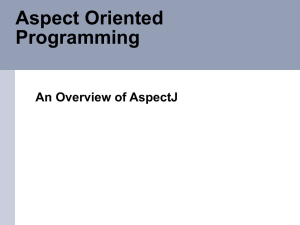Interfaces Declaring an interface
advertisement

Page 1 of 2
Interfaces
Declaring an interface
[access] interface {
// list of method signatures
}
eg,
public interface Shape {
public void draw();
public void setSize(int height, int width);
public int getArea();
}
Interfaces cannot have constructors, fields or implemented methods (method signatures must end with a
semi-colon).
Implementing an interface
[access] [abstract] class implements
{
// must implement all methods declared by interface
}
eg,
public class Circle implements Shape {
public void draw() {
... // implementation }
public void setSize(int height, int width) {
... // implementation
}
public int getArea() {
... // implementation
}
}
Concept
An interface is another way to specify that a class "is a" something else, or rather than an object is part
of some conceptual category. Consider the following code snippet:
Circle c = new Circle();
An instance is implicitly in the category of its class type: c is a Circle. Because class Circle
implements Shape, c is a Shape, as well. Thus, c may be used in contexts expecting a Circle, and in
contexts expecting a Shape.
For example, suppose we had a kind of graphic component, Window.
Page 2 of 2
class Window {
List myShapes = new ArrayList();
public void paint() {
for (Shape shape : myShapes) {
shape.draw();
}
}
...
}
The field myShapes may contain instances of Circles and Squares, but each is uniformly treated as a
Shape (only the draw() method is used). In fact, if a new type of Shape were introduced, such as a
Pentagon, none of the existing code in Window (or in Circle, Square or Shape) would need to be
modified. Any number of new classes may implement Shape and be used in code expecting Shape-like
objects.
Conceptually, implementing an interface is the same as extending a class. They are both a form of
subclassing. The implementing or extending class becomes an is a of the superclass or interface. Thus, it
is important that the implementing class honestly implement the inherited methods (class Cowboy
should not implement Shape and thus implement draw because then somebody's going to get hurt). See
Inheritance for more on why subclasses ought to be behavioral subclasses.






